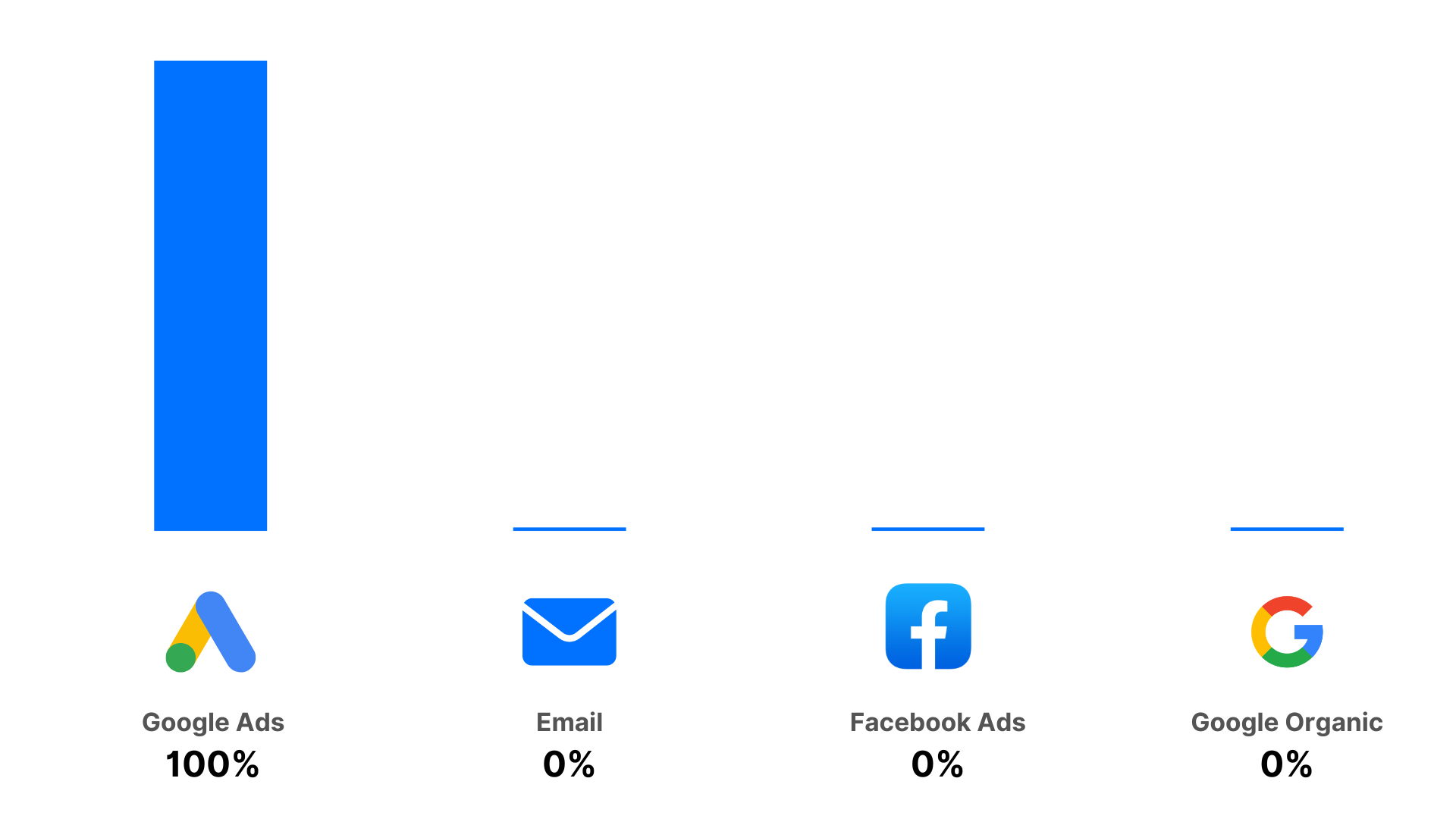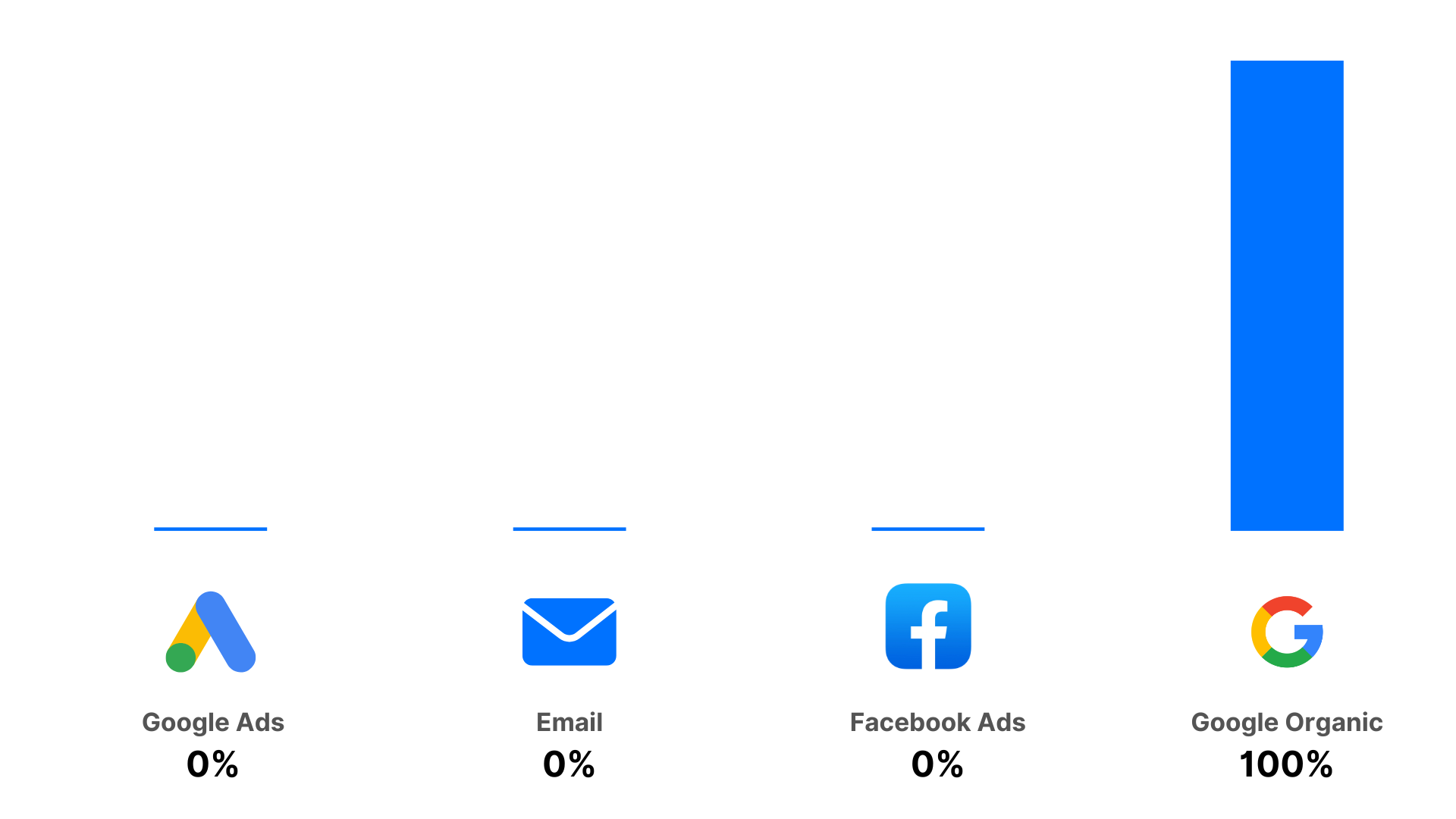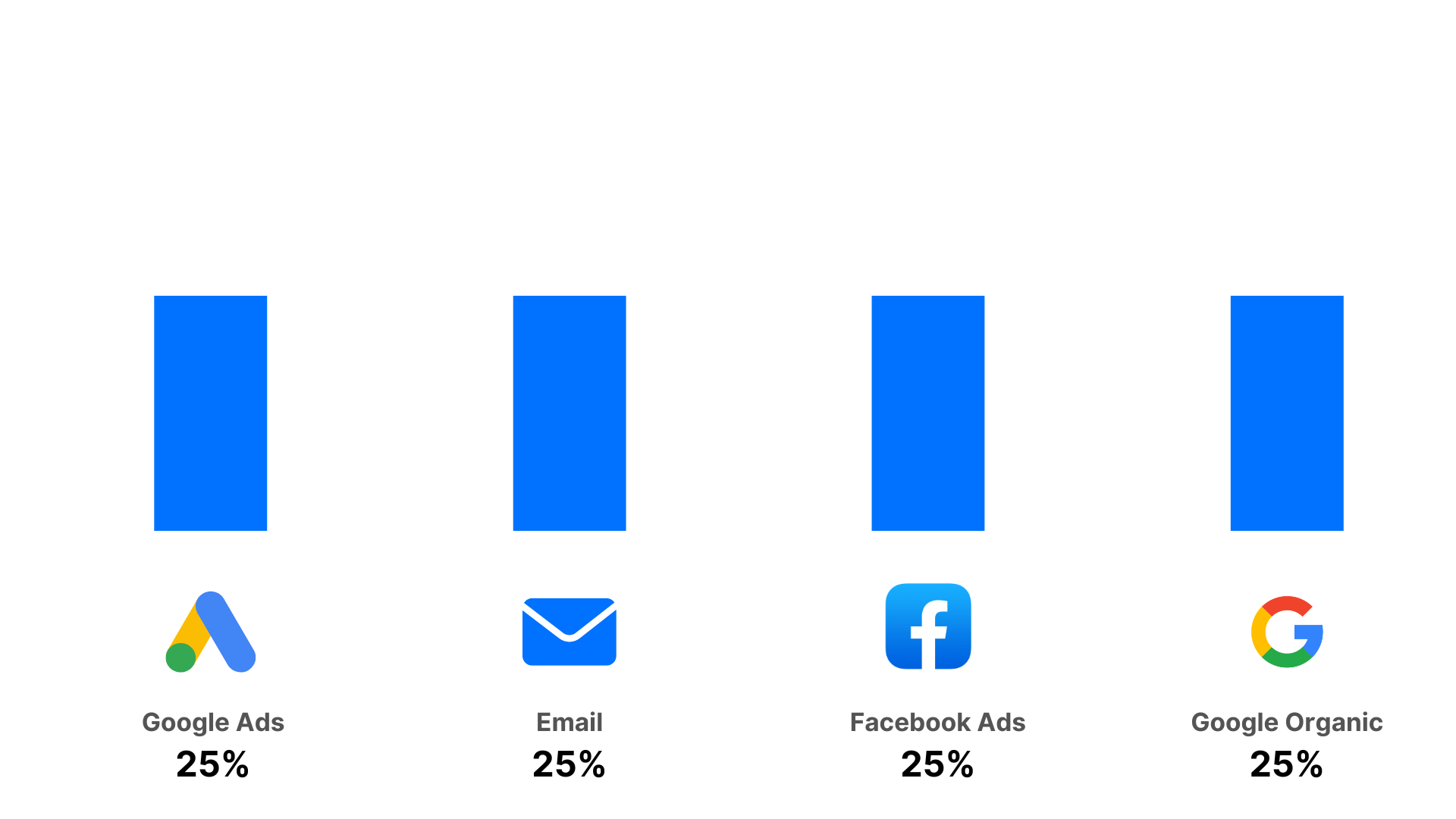As marketers navigate the increasingly complex landscape of digital marketing, understanding which channels contribute most effectively to customer conversions has become a significant challenge. Many marketers find themselves struggling to pinpoint the true impact of their campaigns, leading to inefficient spending and unclear returns on investment (ROI). The need for accurate marketing attribution has never been more pressing, as it provides the clarity necessary to analyze marketing efforts and optimize spending.
Attribution models play a crucial role in this process, offering various frameworks through which marketers can assign credit to different touchpoints in the customer journey. By leveraging these models, marketers can make informed decisions about where to allocate resources and how to refine their strategies. For instance, studies reveal that nearly 60% of marketers report difficulties in measuring the effectiveness of their campaigns, with a lack of clear attribution being a common issue. Understanding the nuances of different attribution models can significantly improve the clarity of their marketing assessments.
By the end of this article, you’ll gain insights into various attribution models, their applications, and how they can enhance your marketing strategies. With a clearer understanding of these models, you can better analyze your marketing efforts and improve your ROI. Let’s dive into the top comparison of attribution models for marketers that can help you achieve your goals.
Best for: Assessing initial brand awareness and engagement strategies.
First Touch Attribution is a model that assigns full credit to the very first interaction a customer has with a brand. This model is instrumental in understanding how customers initially discover your products or services, making it especially valuable for campaigns focused on brand awareness.
1. Overview of First Touch Attribution: This model emphasizes the importance of the initial touchpoint, which can be anything from social media ads to organic search results. By analyzing these interactions, marketers can assess the effectiveness of their lead generation strategies.
2. How It Works: When a customer first interacts with your brand, they enter your marketing funnel. This model allows marketers to identify which channels are most effective at attracting potential customers at the outset of their journey.
3. Key Benefits: Utilizing first touch attribution can help marketers refine their lead generation strategies and budget allocations. It encourages a focus on channels that create initial interest, leading to more effective awareness campaigns.
4. Challenges: However, one limitation is that it may overlook later interactions that also contribute to the conversion, potentially skewing the understanding of a customer's journey.
5. Practical Example: Consider a brand launching a new product through multiple channels. By analyzing first touch data, marketers can see which channel generated the most interest, allowing them to allocate resources effectively for future campaigns.
For a deeper dive into how first touch attribution impacts strategies, check out our detailed guide on First Touch Attribution.
First Touch Example:
Day 1: User clicks a Google Ad
Day 2: The user clicks on a link in an email and lands on your website
Day 3: User clicks a Facebook Ad
Day 4: User visits site from Google organic search and converts
In this case, Google Ads gets 100% of the credit since it was the first touchpoint.

Best for: Identifying the final push that leads to conversion.
Last Touch Attribution is a model that credits the final interaction a customer has with a brand before making a purchase. This model is particularly useful in fast-paced sales environments where quick decision-making is crucial.
1. Overview of Last Touch Attribution: This model attributes the entire conversion to the last channel the customer interacted with, whether it’s an email click or an ad that led them to the final purchase.
2. How It Works: By focusing on the last touchpoint, marketers can identify which channels are most effective at closing a sale, making it easier to allocate resources to high-performing channels.
3. Key Benefits: Last touch attribution simplifies the decision-making process, allowing marketers to quickly assess which channels are driving conversions effectively.
4. Challenges: The downside, however, is that it can neglect the contributions of earlier interactions, leading to a potentially skewed understanding of the customer journey.
5. Practical Example: Imagine running an ad campaign where the last ad clicked resulted in a significant increase in sales. Analyzing this data can help marketers understand the effectiveness of that specific channel in closing sales.
For further insights, explore our comprehensive article on Last Touch Attribution.
Last Touch Example:
Day 1: User clicks a Google Ad
Day 2: The user clicks on a link in an email and lands on your website
Day 3: User clicks a Facebook Ad
Day 4: User visits site from Google organic search and converts
Google Organic gets 100% of the credit because it was the last touchpoint.

Best for: Gaining a comprehensive view of customer interactions across channels.
Multi-Touch Attribution is a model that assigns credit to multiple interactions a customer has with a brand throughout their journey. This model is especially relevant in complex customer journeys that involve multiple touchpoints across different channels.
1. Overview of Multi-Touch Attribution: This model provides a holistic view by considering all interactions, allowing marketers to see how various touchpoints contribute to conversions.
2. How It Works: Multi-touch attribution can be implemented using several methodologies, such as linear, time decay, or algorithmic approaches, each providing a different perspective on how to distribute credit.
3. Key Benefits: By understanding the complete customer journey, marketers can make more informed decisions about resource allocation and strategy refinement. This model enables a better understanding of how each touchpoint contributes to the overall conversion.
4. Challenges: Implementing multi-touch attribution can be complex, as it requires robust data tracking across all channels to ensure accuracy in attribution.
5. Practical Example: A marketing campaign utilizing multiple channels like social media, email, and PPC can leverage multi-touch attribution to assess how each channel played a role in the final sale, leading to optimized future campaigns.
For marketers looking for tools to implement multi-touch attribution, check out our guide on Multi Touch Attribution Tools.
Best for: Valuing recent interactions in long sales cycles.
Time Decay Attribution is a model that gives more credit to interactions that occur closer to the conversion event, recognizing the importance of recency in customer engagement.
1. Overview of Time Decay Attribution: This model emphasizes that the timing of interactions is critical, particularly in longer sales cycles where recent interactions are more indicative of customer intent.
2. How It Works: By assigning more weight to recent interactions, this model helps marketers understand which touchpoints are currently influencing customer decisions.
3. Key Benefits: Time decay attribution can optimize strategies for nurturing leads over longer sales cycles, ensuring that recent engagements are appropriately valued.
4. Challenges: Balancing the emphasis on recent interactions with the historical context of earlier touchpoints can be challenging, potentially leading to misinterpretations of the customer journey.
5. Practical Example: A prospective customer who engages with multiple content pieces over time may be better understood through time decay attribution, allowing marketers to prioritize recent interactions that led to conversion.
For a broader understanding of various digital attribution models, explore our resource on Digital Attribution Models.
Best for: Simplifying the attribution process by equally weighing all interactions.
Linear Attribution is a model that distributes credit equally across all customer interactions, providing a straightforward approach to understanding the customer journey.
1. Overview of Linear Attribution: This model ensures that every touchpoint in the customer journey is recognized, making it easy for marketers to see how various interactions contribute to conversions.
2. How It Works: Each interaction receives equal credit, simplifying the reporting process and making it easier to analyze campaign performance.
3. Key Benefits: Linear attribution is ideal for marketers looking for clarity and simplicity in their reporting, as it provides an unbiased perspective on customer interactions.
4. Challenges: However, this model may overlook the varying impact of different touchpoints, potentially leading to misallocated resources in future campaigns.
5. Practical Example: In a campaign where multiple channels contributed equally to a sale, linear attribution can highlight the collective impact of all interactions, aiding in strategy development.
To see how linear attribution fits into the wider landscape, check out our article on Marketing Attribution Models.
Linear Example:
Day 1: User clicks a Google Ad
Day 2: The user clicks on a link in an email and lands on your website
Day 3: User clicks a Facebook Ad
Day 4: User visits site from Google organic search and converts
Each touchpoint gets 25% credit in the report (1 conversion divided equally among 4 touchpoints).

Best for: Leveraging data and machine learning for precise attribution insights.
Algorithmic Attribution is a model that uses advanced algorithms to determine the value of each touchpoint, making it one of the most sophisticated models available.
1. Overview of Algorithmic Attribution: By analyzing vast amounts of data, this model assigns credit based on the actual impact of each interaction, providing insights that traditional models may miss.
2. How It Works: This approach relies on machine learning to analyze customer behavior and optimize attribution accuracy, making it suitable for complex marketing environments.
3. Key Benefits: Algorithmic attribution can provide precise insights, allowing marketers to optimize their strategies based on data-driven findings.
4. Challenges: Implementing algorithmic attribution requires a robust data infrastructure and can be complex, necessitating expertise in analytics.
5. Practical Example: Organizations leveraging algorithmic attribution can optimize their marketing spend by identifying which channels and interactions yield the highest returns based on data analysis.
For insights into how data plays a crucial role in attribution, explore our resource on Data Attribution.
Best for: Tailoring attribution strategies to specific marketing needs and goals.
Choosing the right attribution model depends on the specific goals of a business and the complexity of its customer journeys. Marketers must consider the unique characteristics of their campaigns to select the most effective model.
1. Overview of Selection: The right model can enhance the effectiveness of marketing strategies, allowing for more accurate assessments of channel performance.
2. How It Works: Evaluate the specific needs of your marketing efforts and align them with the strengths of different attribution models to determine the best fit.
3. Key Benefits: Selecting the appropriate model can significantly improve marketing effectiveness and ROI, ensuring that efforts are directed towards the most impactful strategies.
4. Challenges: Marketers may struggle to adapt their strategies to fit the chosen model, necessitating a thorough understanding of how each model operates.
5. Practical Example: A marketer weighing options based on their unique campaign structure may find that multi-touch attribution offers insights that are more aligned with their goals than a single-touch model.
For more on aligning your attribution model with your customer journey, check out our guide on Customer Journey Optimization.
Best for: Leveraging insights from various attribution models to refine marketing strategies.
Understanding attribution models is crucial for modern marketers aiming to optimize their strategies. By leveraging these models, marketers can make informed decisions about resource allocation and strategy refinement.
1. Overview of Importance: Accurate attribution can significantly enhance marketing effectiveness, allowing marketers to understand which channels drive conversions.
2. How It Works: By analyzing various attribution models, marketers can gain insights into how to optimize their strategies and improve ROI.
3. Key Benefits: Embracing attribution models leads to data-driven decision-making, ensuring that marketing efforts are both efficient and effective.
4. Challenges: Marketers must stay informed about the evolving landscape of attribution models to adapt their strategies accordingly.
5. Practical Example: A hypothetical scenario where a marketer successfully implements a chosen model highlights the potential for improved decision-making through informed attribution practices.
To further explore how data-driven strategies can enhance your marketing efforts, check out our resource on Data-Driven Marketing Strategy.
Choosing the right attribution model can make a significant difference in understanding the effectiveness of your marketing efforts. Each model offers unique insights and advantages, allowing marketers to tailor their strategies based on their specific goals and customer journeys. By recognizing the importance of attribution, marketers can optimize their campaigns, improve ROI, and make informed decisions about resource allocation.
Ready to transform your attribution strategies? Get your free demo today and see the difference a comprehensive attribution approach can make in your marketing performance!
Learn how Cometly can help you pinpoint channels driving revenue.
.svg)
Network with the top performance marketers in the industry